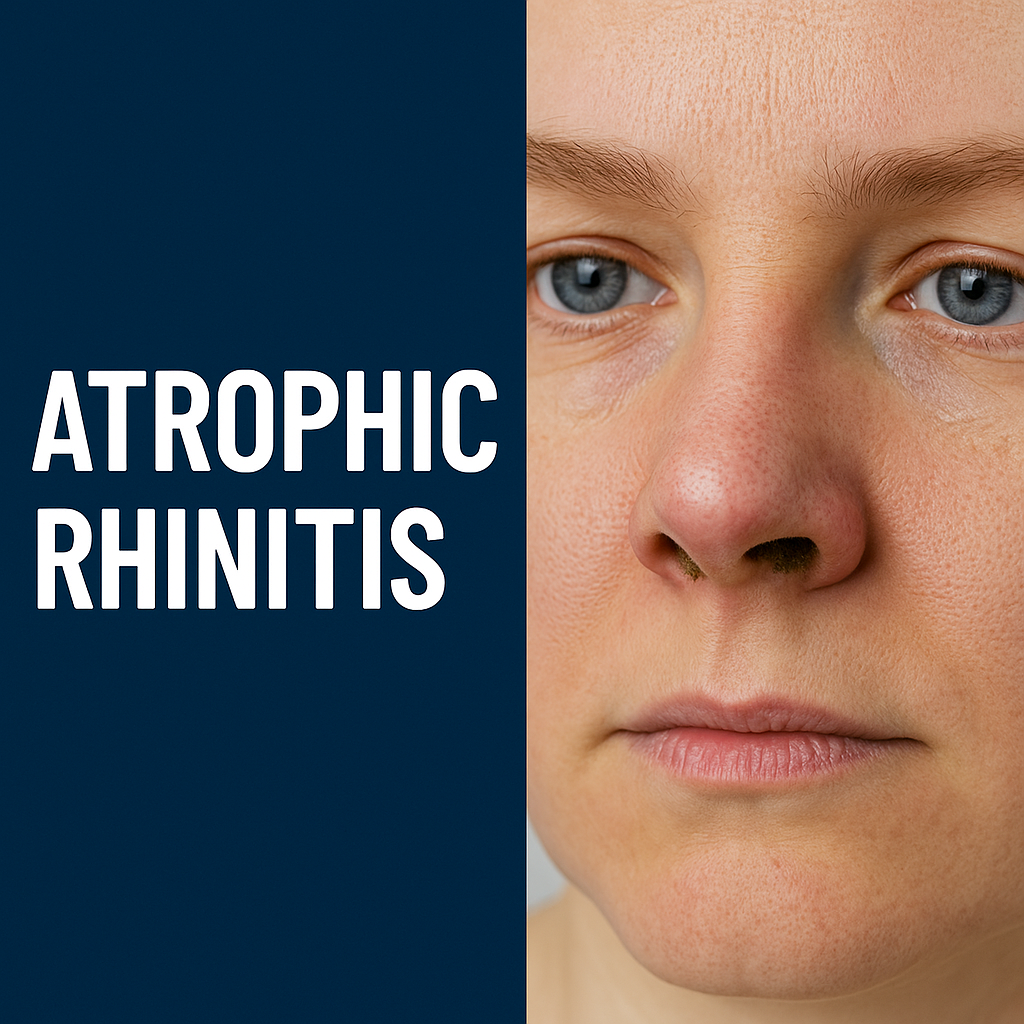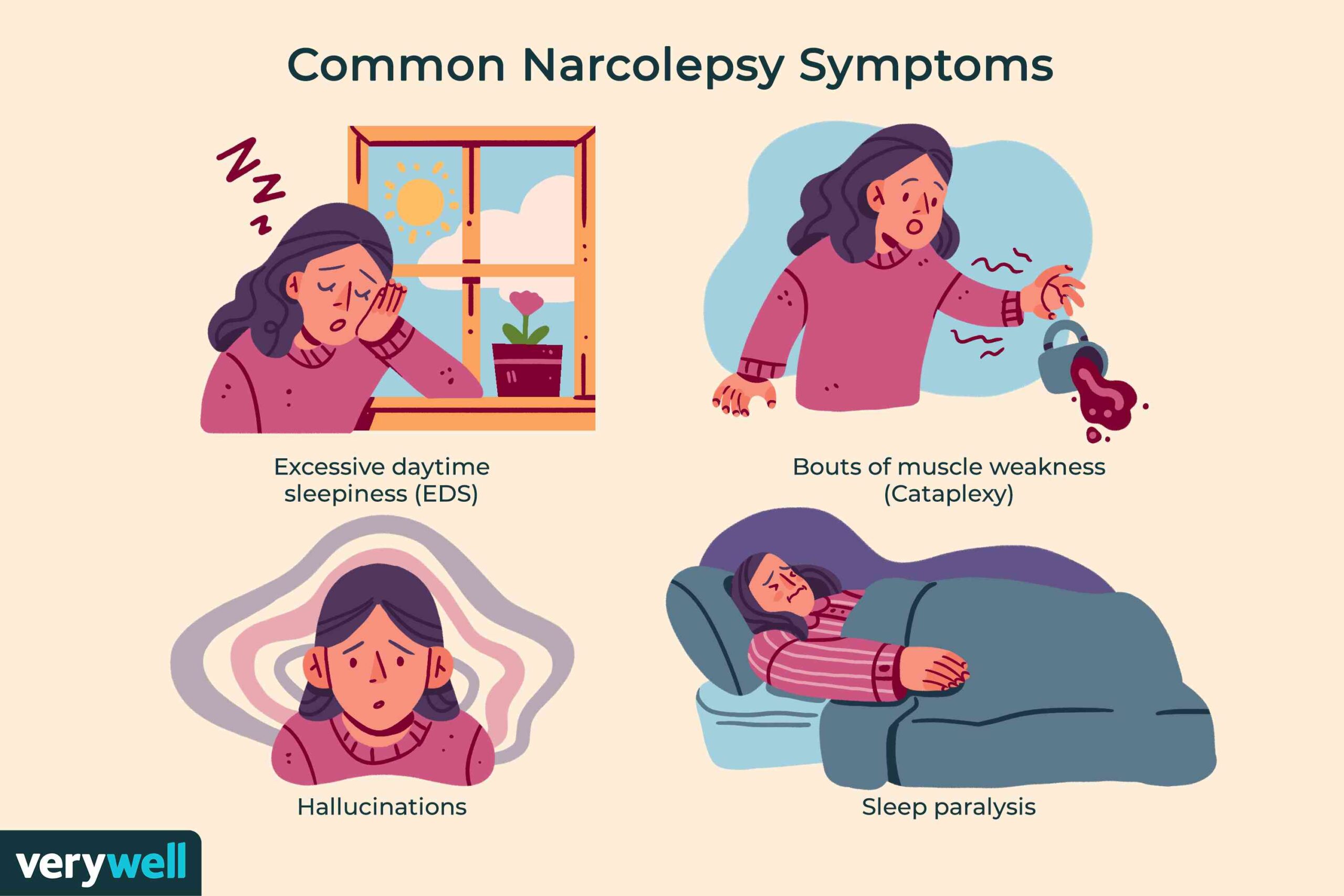“What Is the Best Treatment for Atrophic Rhinitis? Doctors Reveal the Top Options”
Atrophic rhinitis is treated primarily with conservative measures, concentrating on alleviating symptoms and warding off secondary infections. The majority of the time, this entails nasal douching with alkaline solutions, applying glucose in glycerin topically, and perhaps administering antibiotics or antimicrobials. When conservative treatment is ineffective, surgical procedures such as nasal implants or turbinate reconstruction may be taken into consideration to lessen symptoms and enhance nasal airflow.
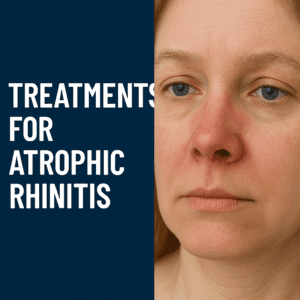

Conservative Therapy:
Nasal rinsing:
Frequent douching with an alkaline solution, such as a mixture of salt, sodium biborate, and sodium bicarbonate in water, aids in the removal of debris and crusts, which can reduce congestion and bad smell.
Applications for the skin:
Using 25% glucose in glycerin following douching might help prevent the development of germs that cause the bad smell and crust formation.
Antibiotics:
Antibiotics may be administered to stop the development of bacteria in the case of secondary infections. In certain research, rifampicin has demonstrated potential.
Humidifiers:
A humidifier can help increase humidity in the nasal passages, which reduces dryness and pain.
Additional Topical Therapies:
To enhance nasal mucosa and alleviate dryness, nasal drops containing ingredients such as glucose-glycerine or liquid paraffin and vasodilators (medicines that dilate blood vessels) may be used.
Surgery:
Reconstruction of the Turbinate:
Autologous costal cartilage, which is cartilage from the patient’s own ribs, has been utilized in treatments such the reconstruction of the lower turbinate, which has demonstrated promise in enhancing nasal airflow and mucosal thickness in individuals with severe atrophic rhinitis.
Nasal Implants:
The size of the nasal cavity can be decreased and the airflow can be improved by surgically inserting implants, such as Teflon strips or autologous cartilage.
Young’s Procedure, with Modifications:
The goal of this operation is to minimize the size of the nasal cavity by moving the nasal wall and generating flaps.
Other Factors to Consider:
Addressing Underlying Issues:
Addressing the underlying cause is essential for successful therapy if atrophic rhinitis is secondary to another condition (such as systemic disorders, nutritional deficits, or granulomatous infections).
Ayurvedic Method:
Ayurveda emphasizes detoxifying the nasal passages, eliminating the offensive odor, and regenerating the nasal mucosa. This includes methods like Nasya (the instillation of medicinal oils into the nose), Dhumapana (the inhalation of medicinal smoke), and internal remedies to support nasal mucosa regeneration and digestion.
Treatment That Is Tailored to Each Patient:
The patient’s treatment plan should take into account the severity of the illness, any underlying medical issues, and the patient’s general health and choices.
Atrophic Rhinitis
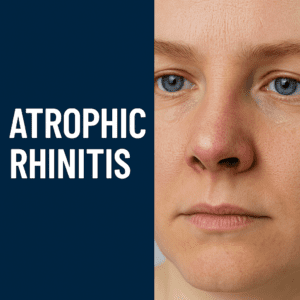

An overview
The inside of your nose is impacted by atrophic rhinitis (AR). When the tissue that lines the nose, known as the mucosa, and the bone underneath contract, the illness develops. Atrophy is the term used to describe this reduction. It can cause alterations to the way the nasal passages operate.
Generally, AR is a disease that affects both of your nostrils simultaneously. Although annoying, AR is not fatal. Different treatments may be needed to relieve symptoms.
What are the signs?
Numerous unpleasant symptoms can result from AR. A potent, offensive odor is part of this. If you have AR, you could not always be able to identify the strong aroma yourself, but people around you will. In addition, your breath will have an exceptionally unpleasant odor.
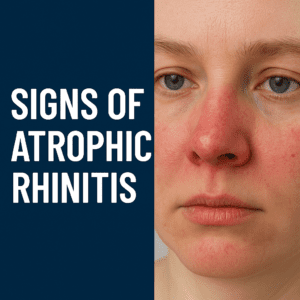

Additional frequent signs of AR include:
- a coating, sometimes green, that may fill the nose
- obstruction of the nose
- nasal discharge
- deformity of the nose
- nosebleeds
- reduction in smell or loss of it altogether
- regular infections of the upper respiratory system
- a painful throat
- eyes full of tears
- headaches
The flies attracted to the strong smell may even cause maggots to live inside the noses of some persons with AR in tropical areas.
What are the contributing factors and risk factors?
There are two distinct varieties of augmented reality. The ailment might manifest at any point in your life. The ailment affects women more frequently than men.
Primary atrophic rhinitis
Primary AR happens spontaneously, uncaused by underlying diseases or medical occurrences. When your doctor takes a culture of the nose, the bacteria Klebsiella ozaenae is frequently discovered. If you have AR, you may also have additional bacteria.
Although the exact cause is unknown, there are a number of underlying variables that can make you more susceptible to primary AR, such as:
- genetics
- inadequate diet
- persistent infections
- low iron levels causing anemia
- endocrine disorders
- autoimmune disorders
- environmental elements
The United States has a relatively small number of primary AR cases. It is more common in tropical nations.
Rhinitis, secondary atrophic
The underlying cause or prior surgery causes secondary AR. If you’ve experienced any of the following, you could be more at risk for secondary AR:
- surgery on the sinuses
- radiation
- injury to the nose
Factors that may raise your chance of acquiring secondary AR include:
- syphilis
- tuberculosis
- lupus
If your septum is severely deviated, you may also be more prone to secondary AR. The illness can also be brought on by persistent cocaine usage.
After ruling out other possibilities, your doctor might determine that you have AR. A biopsy and physical examination will be used by your doctor to identify the illness. X-rays may also be used by them to aid in diagnosis.
DISCLAIMER-Some patients go to net and directly take treatment from there which can lead to catastrophic consequences-Then- Many people ask then why to read all this text -the reason is that it helps you to understand the pathology better ,you can cooperate with treatment better ,your treating physician is already busy with his patients and he does not have sufficient time to explain you all the things right from ABCD ,so it is always better to have some knowledge of the disease /disorder you are suffering from.
What are the potential treatments?
There are several strategies for treating AR. The primary objectives of treatment are to restore moisture to the inside of your nose and reduce the crusting that accumulates there.
The therapy for AR is extensive and sometimes ineffective. Different therapies may be needed to control the illness. Continuous care is also essential since symptoms often come back when treatment is discontinued.
Non-surgical therapies aim to treat and lessen your symptoms. To enhance the situation, surgical procedures restrict the nasal passageways.
Nasal irrigation is the initial course of treatment for AR. By increasing tissue hydration, this therapy may aid in lessening nasal crusting. It is necessary to irrigate your nose multiple times a day. An antibiotic solution, saline, or a combination of other salts could be used as the irrigation solution.
Furthermore, your physician can advise using a product that helps keep your nose from drying out, like a mixture of mineral oil and sugar or glycerin. This might be given as a nose drop.
The usage of honey nose drops as a replacement for glycerin drops was the subject of a recent study in India. According to this little research, 77% of the individuals who used honey nose drops showed “good” symptom improvement, while 50% of those who used glycerin drops saw improvement. In addition to its antibacterial capabilities, the researchers think that honey aids the body in releasing molecules that are vital to wound healing.
The illness may also be treated with prescription drugs. The odor and fluid discharge caused by AR may be lessened by these methods. Even after using these drugs, you’ll probably still need to practice nasal irrigation. The possibilities are endless, some of which are:
- local antibiotics
- oral antibiotics
- substances that cause blood vessel dilation
Wearing a nasal obturator in the nose to shut it up might also be recommended by your physician. Although it doesn’t address the underlying issue, it does lessen troublesome symptoms.
With this device, you might be able to avoid surgery and resume additional therapies like irrigation after you take it off. This gadget is shaped similarly to a hearing aid, allowing it to fit snugly in your nose.
Potential surgical treatments
Surgery and a more aggressive course of therapy for AR may be available. The goals of surgery for AR will be to:
- reduce the size of your nasal passages
- promote the regeneration of tissue in your nose
- Wet your mucosa
- enhance the blood flow in your nose
The following are a few examples of surgical treatments for AR:
Young’s method
Young’s method blocks the nostril and gradually aids in the healing of the mucosa. Following this procedure, several signs of AR will disappear.
This approach has some drawbacks. These are some examples:
- It might be challenging to accomplish.
- Following surgery, the nostril cannot be inspected or cleaned.
- There’s a chance that AR will return.
- People will be obliged to breathe via the mouth and may see a shift in their speech.
- The revised Young method
The Young’s procedure is more complex than the modified Young’s procedure. Not everyone can do it, like those with significant septal abnormalities. The Young approach has many of the same flaws as this one.
Plastipore implementation
The implementation of Plastipore entails introducing soft implants beneath the nasal lining to increase the size of the nasal passages. The downside of this treatment is that the implants might exit your nose and need to be reinserted.
What are the prospects?
The signs of AR may be unpleasant. You should seek medical attention from your physician. There are several ways to relieve symptoms. You might find success with nonsurgical procedures, or you might choose surgery to fix the issue more permanently. It’s also beneficial to address any underlying reasons of AR.
Consult your physician to find out what the best course of action is for you.
If any patient has any ENT -Ear nose throat problems and requires any , consultation ,online consultation ,or surgery in clinic of ENT specialist Doctor Dr Sagar Rajkuwar ,he may TAKE APPOINTMENT BY CLICKING ON THE LINK GIVEN BELOW-
Clinic address of ENT SPECIALIST doctor Dr Sagar Rajkuwar-
Prabha ENT clinic, plot no 345,Saigram colony, opposite Indoline furniture Ambad link road ,Ambad ,1 km from Pathardi phata Nashik ,422010 ,Maharashtra, India-Dr Sagar Rajkuwar (MS-ENT), Cel no- 7387590194 , 9892596635

